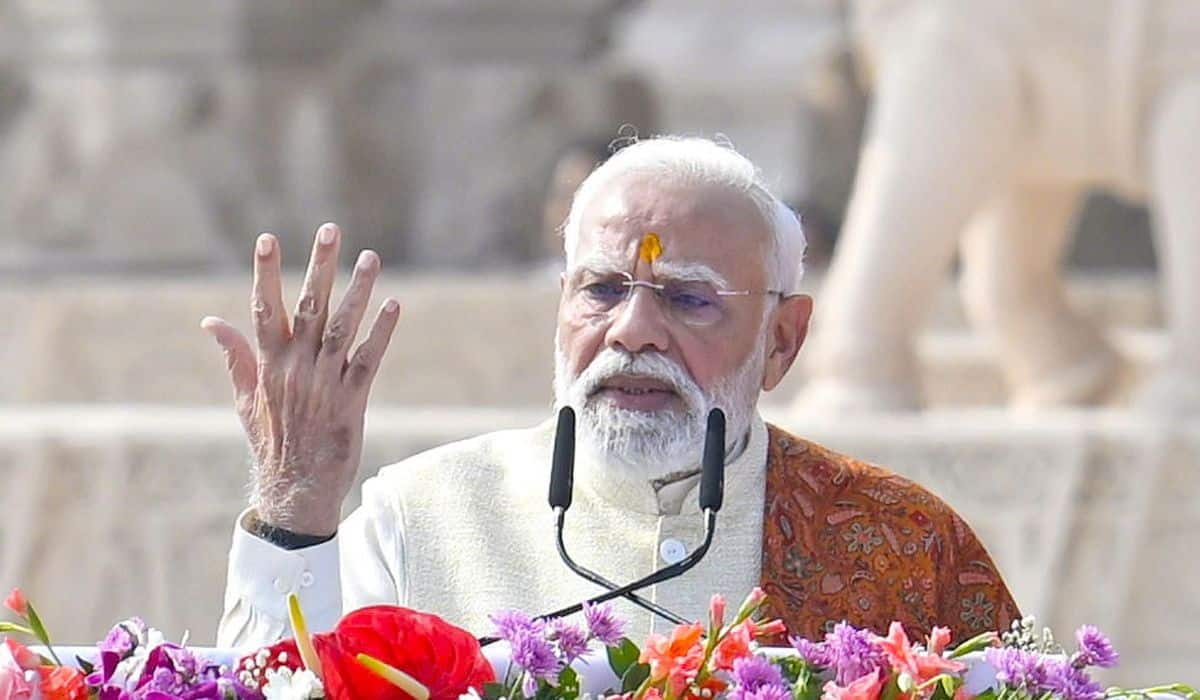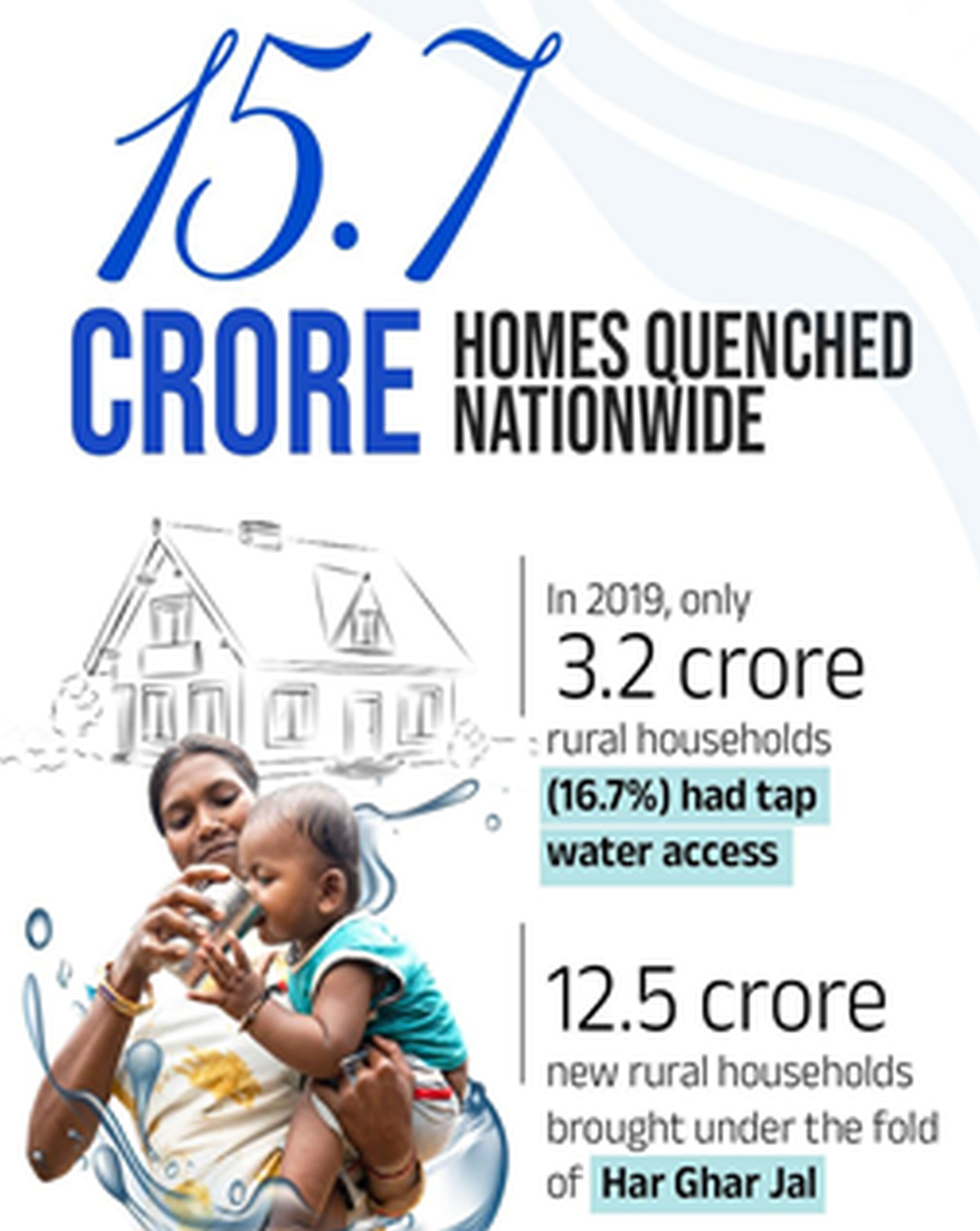"Today, every child in Jammu, Kashmir and Ladakh is born with a clean canvas, where he or she can paint a future full of vibrant aspirations. Today, the dreams of the people are no longer prisoners of the past but about possibilities for the future. After all, development, democracy and dignity have replaced disillusionment, disappointment and despondency." – Prime Minister Narendra Modi
Because of its strategic location and breathtaking scenery, Ladakh holds immense significance for the nation and the Indian economy. The government led by PM Modi has not only embarked on a journey to harness the optimum potential of the region meticulously. Along the way, it has made concerted efforts to bring the region and get the locals on board, integrating them into the mainstream economy while celebrating the heterogeneity and diversity of the nation.
Every transformative journey starts with a vision and a strategy, and the Modi government understands this and strives to abide by it. Since the abrogation of Article 370, the Modi government has led a multifaceted approach, accompanied by far-reaching policies to bring inclusive and sustainable development in the region.
It all started in August 2019 when parliament abrogated Article 370, which gave special status to Jammu & Kashmir, bifurcating the state into the Union Territories of Jammu &Kashmir and Ladakh.
The creation of Ladakh as a union territory has been proven to be catalytic in the anticipated successes of the region and the lives of locals therein. Once-neglected land of snow-clad mountains and crystal-clear water, there have been positive developments and unprecedented growth in the region and its economy.
Despite having endless possibilities and potentialities in previous governments, Ladakh never got its due share of attention. The current government, Narendra Modi, has taken all necessary steps for Ladakh to ensure holistic development in the Union Territory. Whether it is welfare and development schemes or the ones boosting the infrastructure, livelihood and overall economy, the Modi government has taken drastic and extensive measures for the holistic development of the UT of Ladakh.
Be it creating a robust infrastructure and welfare, encouraging green energy for sustainable development of the region, boosting tourism and promoting economic growth, or giving major impetus to the research and development in various sectors affecting the economy, the government under PM Modi has put great efforts in bringing the much-needed growth in the region. The 230-kilometer-long Kargil-Zanskar Road, a vital segment of National Highway 301, has been upgraded and widened to boost connectivity and tourism. This road will significantly enhance the connectivity between Jammu & Kashmir and Ladakh, improve the region's infrastructure and transportation links, and boost tourism.
Further, when it comes to giving a more significant push to tourism and infrastructural boost, the Modi government, in November 2023, decided to build South East Asia's first Night Sky Sanctuary in Ladakh. This will be a major step towards boosting the tourism and infrastructure in the region. Along with boosting Astro-tourism in India, it will be one of the world's highest-located sites for optical, infrared, and gamma-ray telescopes.
The Modi government is not only concerned about creating infrastructural marvels and encouraging tourism in the region, it is also making sure to make the lives of the locals residing there easier. To ensure this, the government has taken several measures, from a fundamental goal of providing an adequate water supply to the futuristic goal of creating ample job opportunities for the valley's youth.
Research and development is another sector where the government has been striving hard to create a niche not just for building the R&D infrastructure but also for creating an opportunity for investments and employment for the youth of the valley. In September 2023, The National Geophysical Research Institute (CSIR-NGRI) in Hyderabad conducted a Magnetic Survey in the Ladakh region using drones. Additionally, the institute is involved in geothermal exploration studies in Ladakh's Puga and Chumatang regions. Ministry of Earth Sciences, in December 2023, installed a Radar costing Rs. 500 lakhs to establish the Meteorological Centre at Leh and supported a project costing Rs. 69.65 lakhs. Such landmark initiatives by the government are concrete steps towards greater socio-economic development in the region.
The government has also been pushing harder towards developing Ladakh as a carbon-neutral region. Public Sector Undertakings have been given the responsibility for developing Green Energy. An example of this is a hydrogen fueling station that is being set up in Leh by NTPC. Also, the Modi government has approved the Green Energy Corridor Project in Ladakh. As part of this initiative, Renewable Energy Projects generating 13,000 MW of power are to be linked to the POWER GRID via the Inter-State Transmission System.
Prime Minister Narendra Modi too believes in changing people's lives at the grassroots level and his welfare is reaching the last benificary. To support the agrarian community in the Union Territory of Ladakh, the India Meteorological Department, under the Ministry of Earth Sciences, implements an Agrometeorological Advisory Services (Gramin Krishi Mausam Seva) program which provides district-level medium-range weather forecasts and Agromet advisories are produced and shared with the local farming community.
Today, the government initiatives and policies demonstrated by the unprecedented developments in Ladakh are exemplary. It exemplifies how relentless and consistent the Modi government has been while trying to pursue growth for the benefit of the locals in the valley. With PM Modi's visionary leadership and concerted efforts by his government, Ladakh has been put at the forefront of economic growth.















